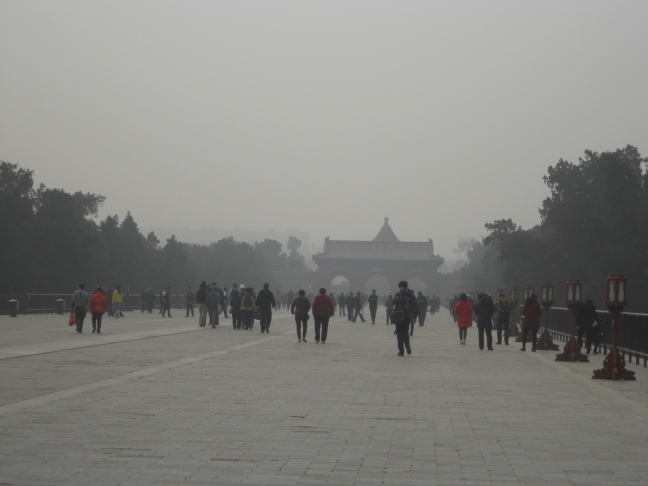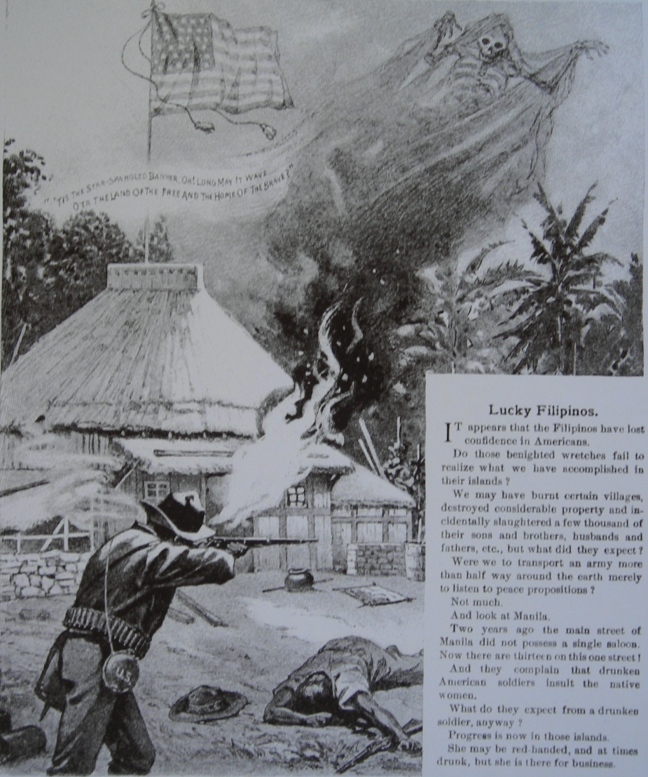(Disclaimer: To my relatives and friends who have been living in the US as American citizens, this is not an anti-American rant. To my Filipino-Chinese acquaintances, this is not a pro-China paean. Just telling things as they are from my point of view. And to find out for myself whether or not President Duterte is justified in “cozying up” to our neighbor and “separating” from our former colonial master.)
 The Amboys in our midst are apoplectic over President Duterte’s perceived anti-American stance and friendliness towards China. One respectable gentleman even calls it a national tragedy.
The Amboys in our midst are apoplectic over President Duterte’s perceived anti-American stance and friendliness towards China. One respectable gentleman even calls it a national tragedy.
I wonder why. They sound so un-Filipino and anti-Filipino to me.
How much do Filipinos love America? How much does America love Filipinos in return?

Conversely, why do Filipinos love China less? Or sometimes deride – when, in truth and in fact, a big chunk of the Philippine population are of Chinese descent. Tsinoys, they are called, and while many of them do not have Filipino genes, they consider themselves Filipino for having been born here. On the other hand, most Amboys are pure Filipino with nary a drop of American plasma in them. Get the drift.
Then, too, the Chinese never colonized the Philippines even if both peoples have been trading with each other since ancient times – centuries before Ferdinand Magellan “landed on Limasawa at noon” and Christopher Columbus set foot on American soil.
Thus, let me count the ways. And revisit a little bit of history. Starting with the Philippine-American War at the turn of the 20th century that so little is known about.

First of all, let this sink in: “The overall cost in human lives of American actions in the Philippines was horrific. One scholar has concluded concerning the American occupation that in the 15 years that followed the defeat of the Spanish in Manila Bay in 1898, more Filipinos were killed by U.S. forces than by the Spanish in 300 years of colonization. Over 1.5 million died out of a total population of six million.”
That tiny bit of information is verifiable at the click of your mouse if you know which archives to look, with the figures varying from one document to another. And if you click your mouse further, you will find that massacring Filipinos was a matter of fact for our American colonizers during that dark period in our existence as a nation; and that they came not as rescuers, which we were apparently made to believe, but as vanquishers.
America’s most famous literary icon, Mark Twain, put it succinctly: “…I have seen that we do not intend to free, but to subjugate the people of the Philippines. We have gone to conquer, not to redeem…”

In truth, historians refer to the Philippine-American War as the “first Vietnam” where such tactics as strategic hamleting and scorched-earth policy were first used and the death of hundreds of thousands of Filipinos was “usually accounted for as either collateral damage or victims of insurrection.”
Doesn’t the term ‘collateral damage’ sound familiar these days?
In November 1901, the Manila correspondent of the Philadelphia Ledger reported: ”The present war is no bloodless, opera bouffe engagement; our men have been relentless, have killed to exterminate men, women, children, prisoners and captives, active insurgents and suspected people from lads of ten up, the idea prevailing that the Filipino as such was little better than a dog….”
Doesn’t that sound like ‘extrajudicial killings’? Genocide? Mass murder? Butchery? (Not to mention patently racist. Little better than a dog?)


If you are not convinced, click your mouse again onto “Balangiga Massacre”, “Bud Dajo Massacre” or “US war crimes in the Philippines” and you might run into an American general who specifically ordered his men “to kill and burn: the more you kill and burn, the better you will please me.” Or another general who wrote: “All able bodied men will be killed or captured… These people need a thrashing to teach them some good common sense…”
So, yes, those atrocities happened over a hundred years ago. Atrocities which America never apologized for. Because it was all part of President McKinley’s so-called Benevolent Assimilation? In McKinley’s words:“…We could not leave them to themselves – they were unfit for self-government – and they would soon have anarchy and misrule over there worse than Spain’s was; and that there was nothing left for us to do but to take them all, and to educate the Filipinos, and uplift and civilize and Christianize them…”

Not to forget that Japan invaded the Philippines during World War II, not because we were at war with them but because we were with America. And it cost the lives of one million Filipinos.
By the way, the first American Governor General after whom Taft Avenue is named, coined the phrase little brown brothers when he told McKinley that “our little brown brothers” would need “fifty or one hundred years” of close supervision “to develop anything resembling Anglo-Saxon political principles and skills.”
The point being that those who do not remember the past are doomed to repeat it. What purpose does recording history serve if people do not learn from it?
Speaking of the past, historical records suggest that the earliest direct Chinese contact with the Philippines was during the early years of the Sung Dynasty (962-1279). And surprise, surprise, Filipinos went to China before the Chinese came to the Philippines. Merchants from “Ma-i” (Mindoro) were said to be part of a luxury trade bringing to Guangzhou scents, ivory, coral, pearls, fine steel, tortoise shell, crystal, sea-turtle leather, cloths and other wares in exchange for gold, silver, coin strings, lead, tin, multi-colored silk and porcelain.

Does that seem like the pre-colonial Filipinos were uncivilized? And Western historians called them barbarians.
Ma-i traders arrived on the Canton coast in 982, not on a tribute mission but sailing directly with valuable merchandise for sale. The first Philippine tribute mission to China appears to have come from Butuan (P’u-tuan) which was described as a small country in the sea to the east of Champa (Vietnam) in March 1001.
Back then, a tribute mission was the Chinese idea of diplomacy where neighboring lands and tribes paid homage to the emperor through presents of pearls and aromatics. In return, the envoys were given brocaded court costumes encrusted with gold and jade, among others. The tributary states did not become colonies or part of the imperial system but were simply enlisted as independent states occupying their proper niche in the Chinese order.
 Doesn’t China still use trade today as a diplomatic weapon, dispensing favors in the form of investments and soft loans to both near and distant countries?
Doesn’t China still use trade today as a diplomatic weapon, dispensing favors in the form of investments and soft loans to both near and distant countries?
Fast forward to Mao Zedong’s Great Proletariat Cultural Revolution (1966-1976) marked by a violent class struggle “that saw countless politicians and intellectuals driven to their deaths, civilians killed in armed conflicts, and cultural relics and artefacts destroyed. The official death toll numbered more than 1.7 million.”

Fifty years hence, the People’s Republic of China – once dubbed as the sleeping giant – has risen to become the second largest economy in the world and, according to Forbes, is set to overtake the US in 2018. While it has been criticized by Western media for unfair trade practices including intellectual property theft and protectionism, its socialist market economy has allowed the still communist state to finance an ambitious space program and initiate the creation of the Asian Infrastructure Investment Bank to rival the World Bank, while its Renminbi currency is undergoing the process of internationalization.
Sometime in 1817, Napoleon Bonaparte was supposed to have said, “China? There lies a sleeping giant. Let him sleep, for when he wakes he will move the world.”
So, is President Duterte right in turning to China and strengthening ties with our other Asian neighbors? The writing is on the wall.

For what it is worth, I am not scared of Beijing. I am not scared of its ancient temples and rich culture, its great halls and massive squares, even its smog, imposing structures and seemingly impassive inhabitants. Its long, enigmatic past touches the old soul and its dynamic, straightforward present arouses the senses.
I am more scared of being humiliated by an American consul denying me a visa to enter his country because I don’t speak English well enough or I don’t look “prosperous” enough. I am more scared of being accosted by an American immigration officer talking down at me and demanding what I am doing in his great country. It would diminish my pride and dignity as a fellow member of the human race.
As a true Oriental, ‘Crouching Tiger, Hidden Dragon’ beckons to my sense of wonder and curiosity more than ‘Gone with the Wind’ ever will.
However, as a pure Filipino, I am not anti- or pro-USA. Neither am I anti- or pro-China. I will only be forever pro-Philippines.
